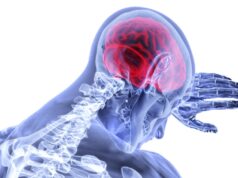 Theranica has announced the results of a study recently published in the journal Headache demonstrating the safety of its Nerivio device—a novel remote electrical neuromodulation (REN) wearable—as a drug-free treatment for pregnant women with migraine.
Theranica has announced the results of a study recently published in the journal Headache demonstrating the safety of its Nerivio device—a novel remote electrical neuromodulation (REN) wearable—as a drug-free treatment for pregnant women with migraine.
The study found no statistically significant differences in critical pregnancy outcomes between women with migraine who used the Nerivio migraine bioband during pregnancy throughout three months postpartum and those who did not use the device during this period. As such, Theranica claims that the study demonstrates Nerivio’s safety as a migraine treatment for pregnant women while reinforcing its efficacy, as seen in previous studies.
“Pregnant patients should have access to safe and effective therapies for managing migraine—therapies that do not compromise the health and safety of mother or foetus,” said Addie Peretz (Stanford Medicine, Stanford, USA), lead author of this new study. “While more targeted studies in pregnant women with migraine are needed, this study offers hope for those seeking effective and safe interventions for migraine during pregnancy.”
A company press release details that, according to the American Headache Society, some medications are contraindicated during pregnancy due to their potential for foetal or maternal harm, while other treatments have not been adequately studied in pregnancy. This has resulted in a “great unmet need” for safe migraine treatments during pregnancy and lactation.
The recent controlled study consisted of a retrospective survey of women with migraine, between 18 and 45 years of age, who were pregnant during the study period. In the REN group, 59 women used Nerivio for at least three treatments during the study pregnancy period, while 81 women in the control group were treated with various standard care treatments during pregnancy—excluding Nerivio.
There was no statistical difference between the two groups in terms of the following pregnancy outcomes: gestational age; baby’s birth weight; miscarriage rate; stillbirth rate; preterm birth rate; birth defects rate; baby meeting developmental milestones three months after birth; and rate of emergency room or urgent care visits due to pregnancy and/or migraine symptoms.
Headache also conducted a video interview with two of the study authors—Peretz and Nina Riggins (University of California San Diego Health, San Diego, USA)—about the importance of this work, which can be viewed here.










